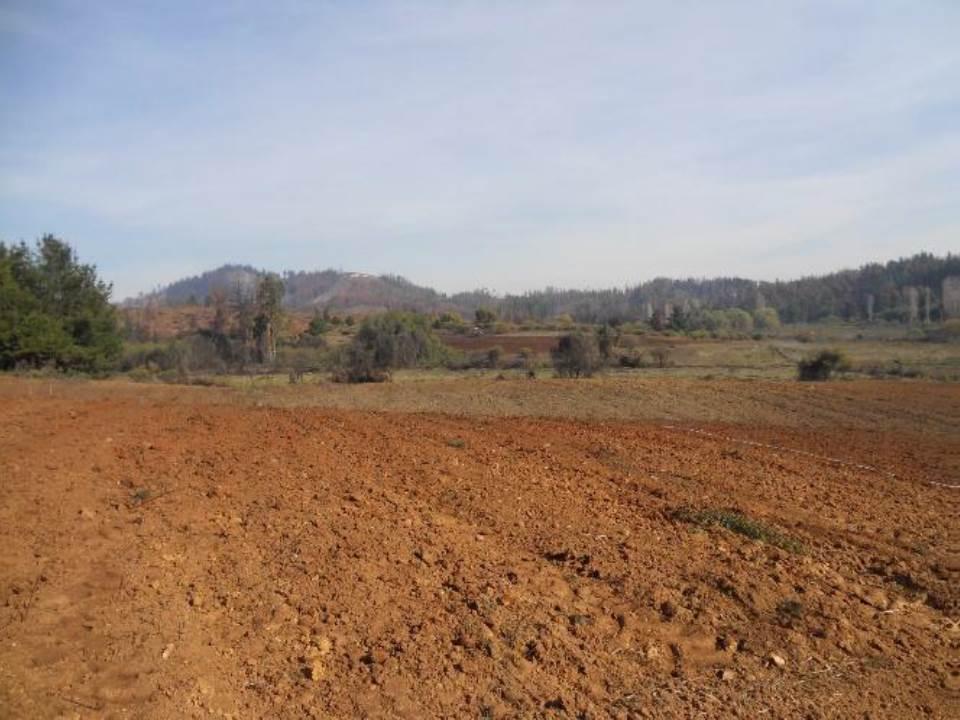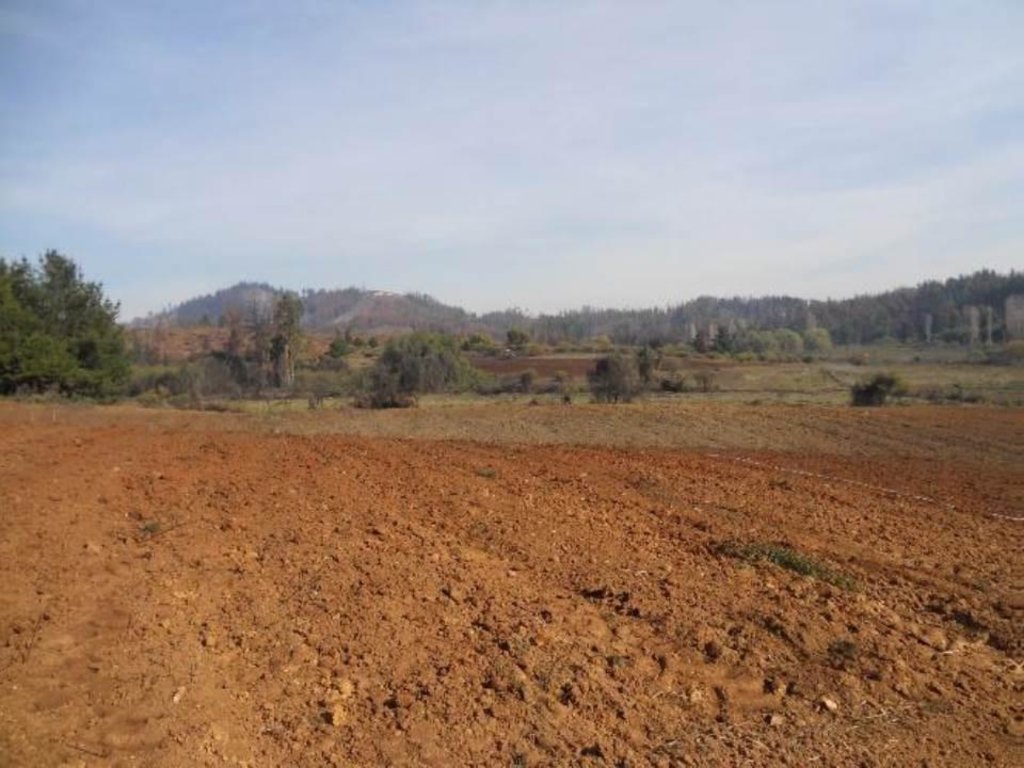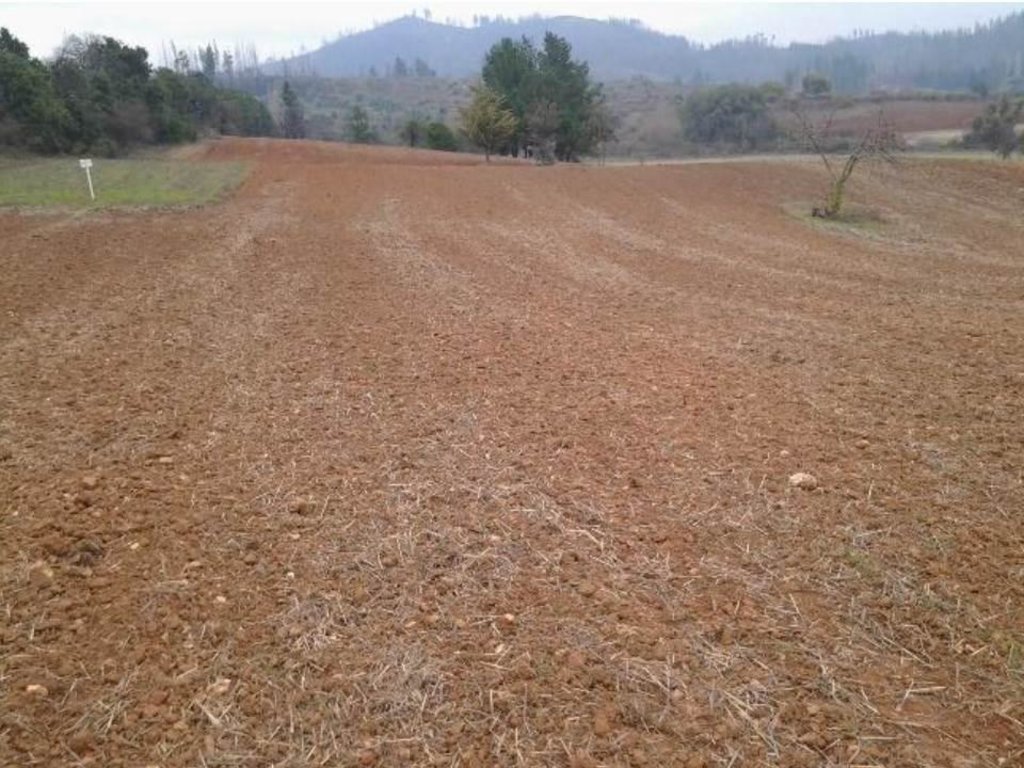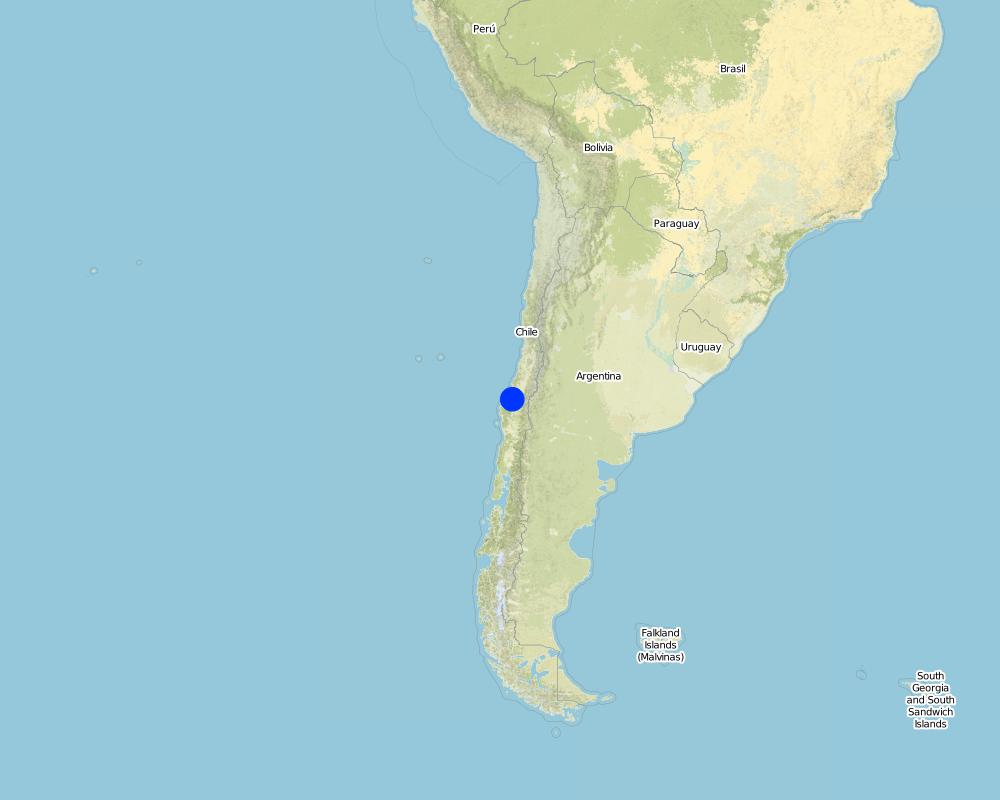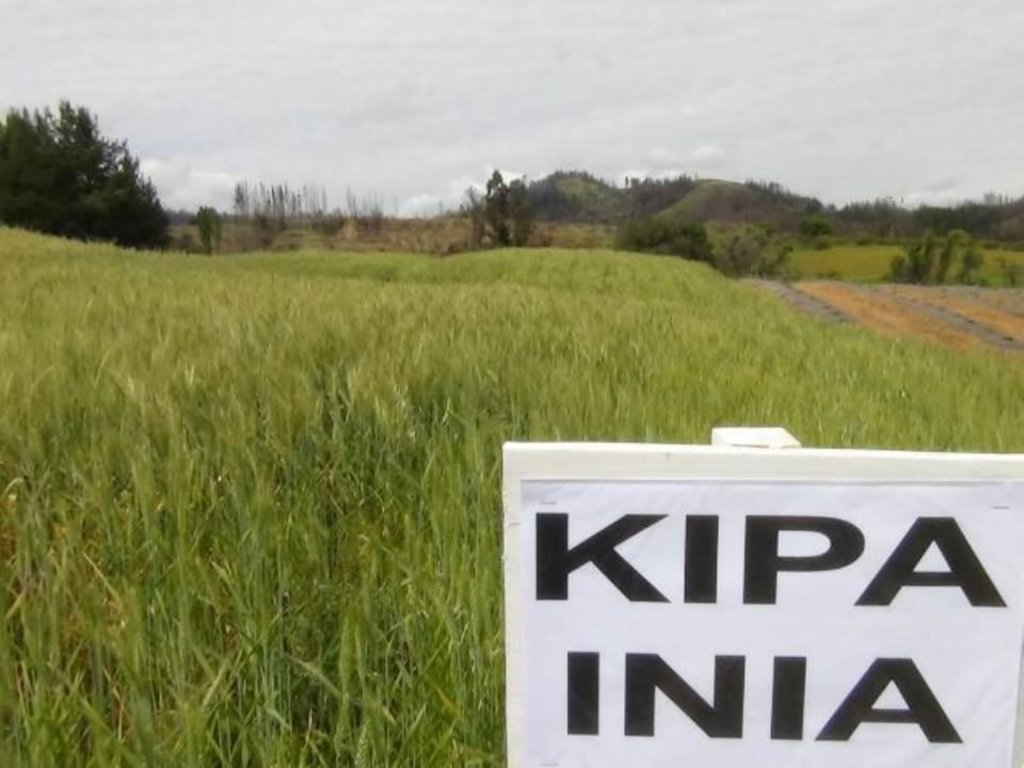Sistema Ganado-Cultivo: Rotación de Pradera-Cultivo Mediante Mínima Labranza [Chile]
- Creation:
- Update:
- Compiler: Florian Dieker
- Editor: –
- Reviewers: Deborah Niggli, Alexandra Gavilano
technologies_1657 - Chile
View sections
Expand all Collapse all1. General information
1.2 Contact details of resource persons and institutions involved in the assessment and documentation of the Technology
SLM specialist:
RUIZ SÁNCHEZ CARLOS
Quilampu Ingeniero Agrónomo, D.E.A. Chile
Chile
Name of project which facilitated the documentation/ evaluation of the Technology (if relevant)
Sistematización de prácticas de conservación de suelos y aguas para la adaptación al cambio climático (FAO)1.3 Conditions regarding the use of data documented through WOCAT
The compiler and key resource person(s) accept the conditions regarding the use of data documented through WOCAT:
Ja
1.4 Declaration on sustainability of the described Technology
Is the Technology described here problematic with regard to land degradation, so that it cannot be declared a sustainable land management technology?
Nee
2. Description of the SLM Technology
2.1 Short description of the Technology
Definition of the Technology:
Sistema ganado-cultivo. Rotación de cereales con praderas leguminosas anuales permanentes en suelos de baja pendiente en zona de secano
2.2 Detailed description of the Technology
Description:
La tecnología implementada consiste en un sistema de mínima labranza para establecer cereales y leguminosas de grano en el secano interior de la zona centro-sur de Chile, específicamente en la comuna de Ránquil, provincia de Ñuble, Región del Biobío. Lo recomendable para la zona es establecer los cultivos en cero labranza, pero la baja disponibilidad de maquinaria limita esta opción.
Propósito de la tecnologia: La tecnología descrita reemplaza el sistema tradicional de producción en la zona, que consiste en el año anterior a la siembra hacer un barbecho y al año siguiente sembrar. Mantiene un cierto equilibrio entre la actividad agropecuaria y la actividad forestal.
Actividades de establecimiento / mantenimiento e insumos: Las investigaciones desarrolladas por INIA en la zona han demostrado que existen muchas dificultades para que las aguas lluvias y la raíces de los cultivos penetren y se desarrollen en el perfil del suelo. Para ello, en primer término y cada 3 o 4 años es necesario realizar una aradura vertical en profundidad (45 cm) denominada subsolado. Esta labor y las siembras se realizan en suelos con menos de un 15 – 20% de pendiente.
En estas condiciones se puede iniciar una rotación en el área de cereales con leguminosas de grano. Al año siguiente, donde había cereales, incluso se pueden sembrar praderas a base de leguminosas de grano. Luego, del subsolado, se pasa una rastra para preparar una cama de semilla, a continuación se desparrama a mano la semilla y el fertilizante y con la misma rastra se tapa la semilla.
La tecnología se resume en prestar mucha atención a la labor de subsolado y época de siembra, sembrando a inicio del mes de mayo, con uso de semillas de alto potencial de rendimiento, adaptadas a la zona, y una fertilización balanceada a la siembra se puede alcanzar un rápido cubrimiento del suelo, que sirve como defensa a la erosión hídrica. Si bien se produce cierto grado de pérdida de suelos por erosión, ésta es mucho menor que en el sistema tradicional, cuando se hace barbecho y se siembran variedades antiguas de bajo crecimiento invernal.
Al segundo año se deja una porción de las pajas y residuos (rastrojos) sobre el suelo, de manera de reducir las pérdidas por erosión.
2.3 Photos of the Technology
2.5 Country/ region/ locations where the Technology has been applied and which are covered by this assessment
Country:
Chile
Region/ State/ Province:
Región del Bíobío, Provincia Ñuble
Further specification of location:
Comuna Ránquil
Specify the spread of the Technology:
- evenly spread over an area
If precise area is not known, indicate approximate area covered:
- 10-100 km2
Comments:
10-51 km2.
Map
×2.6 Date of implementation
If precise year is not known, indicate approximate date:
- less than 10 years ago (recently)
2.7 Introduction of the Technology
Specify how the Technology was introduced:
- during experiments/ research
Comments (type of project, etc.):
La entidad investigadora es INIA (Instituto Nacional de Investigación Agropecuaria), centro INIA Quilamapu
3. Classification of the SLM Technology
3.1 Main purpose(s) of the Technology
- improve production
- reduce, prevent, restore land degradation
3.2 Current land use type(s) where the Technology is applied

Cropland
- Annual cropping
- Perennial (non-woody) cropping
Annual cropping - Specify crops:
- cereals - oats
- cereals - other
- fodder crops - other
- legumes and pulses - other
- trigo
Is crop rotation practiced?
Ja
If yes, specify:
rotación trigo, avena, triticale, leguminosas
3.4 Water supply
Water supply for the land on which the Technology is applied:
- rainfed
3.5 SLM group to which the Technology belongs
- rotational systems (crop rotation, fallows, shifting cultivation)
3.6 SLM measures comprising the Technology

agronomic measures
- A7: Others
Comments:
Sistema ganado-cultivo
3.7 Main types of land degradation addressed by the Technology

soil erosion by water
- Wt: loss of topsoil/ surface erosion

chemical soil deterioration
- Cn: fertility decline and reduced organic matter content (not caused by erosion)

biological degradation
- Bc: reduction of vegetation cover
3.8 Prevention, reduction, or restoration of land degradation
Specify the goal of the Technology with regard to land degradation:
- reduce land degradation
- restore/ rehabilitate severely degraded land
4. Technical specifications, implementation activities, inputs, and costs
4.1 Technical drawing of the Technology
Technical specifications (related to technical drawing):
Trigo Kipa INIA, 44,4 qqm/ha, costo operativo anual 25,6
qqm/ha.
Conocimientos técnicos necesarios para el personal / asesores de campo: medio
Conocimientos técnicos necesarios para los usuarios de la tierra: medio
Conocimientos técnicos necesarios para Personal de campo: medio
Principales funciones técnicas: control del impacto de la caida de lluvia, control de la escorrentía dispersa: impedir / retrasar, incremento del nivel del agua subterránea, recarga de agua subterránea
4.2 General information regarding the calculation of inputs and costs
other/ national currency (specify):
Peso chileno
If relevant, indicate exchange rate from USD to local currency (e.g. 1 USD = 79.9 Brazilian Real): 1 USD =:
509.25
4.3 Establishment activities
| Activity | Timing (season) | |
|---|---|---|
| 1. | Compra y flete insumos | |
| 2. | Limpia terreno (Horas máquina (ha)) | |
| 3. | Subsolador tractor (Horas máquina (ha)) | |
| 4. | Rastraje, rastra Kong Kilder, tractor (Horas máquina (ha)) | |
| 5. | Aplicación fertilizantes al voleo (Horas hombre (h)) | |
| 6. | Siembra al voleo (Horas hombre (h)) | |
| 7. | Rastraje rapado semilla, rastra Kong Kilder, tractor (Horas máquina (ha)) | |
| 8. | Aplicación herbicida control malezas (Horas hombre (h)) | |
| 9. | Aplicación urea. Segunda aplicación nitrógeno (Horas hombre (h)) | |
| 10. | Aplicación urea. Tercera aplicación nitrógeno (Horas hombre (h)) | |
| 11. | Trilla (Horas máquina (h)) |
4.4 Costs and inputs needed for establishment
| Specify input | Unit | Quantity | Costs per Unit | Total costs per input | % of costs borne by land users | |
|---|---|---|---|---|---|---|
| Equipment | Subsolador tractor | 1.0 | 78.55 | 78.55 | ||
| Equipment | Rastraje, rastra Kong Kilder, tractor | 1.0 | 29.46 | 29.46 | ||
| Equipment | Rastraje rapado semilla, rastra Kong Kilder, tractor | 1.0 | 29.46 | 29.46 | ||
| Plant material | Limpia terreno | 2.0 | 29.47 | 58.94 | ||
| Fertilizers and biocides | Aplicación fertilizantes al voleo | 1.0 | 295.92 | 295.92 | ||
| Fertilizers and biocides | Siembra al voleo | 1.0 | 119.78 | 119.78 | ||
| Fertilizers and biocides | Aplicación herbicida control malezas | 1.0 | 27.17 | 27.17 | ||
| Fertilizers and biocides | Aplicación urea. Segunda aplicación nitrógeno | 1.0 | 13.75 | 13.75 | ||
| Other | Compra y flete insumos | 1.0 | 39.27 | 39.27 | ||
| Other | Aplicación urea. Tercera aplicación nitrógeno | 1.0 | 13.75 | 13.75 | ||
| Other | Trilla | 1.0 | 70.69 | 70.69 | ||
| Total costs for establishment of the Technology | 776.74 | |||||
| Total costs for establishment of the Technology in USD | 1.53 | |||||
4.6 Costs and inputs needed for maintenance/ recurrent activities (per year)
Comments:
Costos corresponden a la investigación llevada a cabo por INIA Quilamapu, no son usuarios de la tierra los usuarios.
5. Natural and human environment
5.1 Climate
Annual rainfall
- < 250 mm
- 251-500 mm
- 501-750 mm
- 751-1,000 mm
- 1,001-1,500 mm
- 1,501-2,000 mm
- 2,001-3,000 mm
- 3,001-4,000 mm
- > 4,000 mm
Agro-climatic zone
- sub-humid
5.2 Topography
Slopes on average:
- flat (0-2%)
- gentle (3-5%)
- moderate (6-10%)
- rolling (11-15%)
- hilly (16-30%)
- steep (31-60%)
- very steep (>60%)
Landforms:
- plateau/plains
- ridges
- mountain slopes
- hill slopes
- footslopes
- valley floors
Altitudinal zone:
- 0-100 m a.s.l.
- 101-500 m a.s.l.
- 501-1,000 m a.s.l.
- 1,001-1,500 m a.s.l.
- 1,501-2,000 m a.s.l.
- 2,001-2,500 m a.s.l.
- 2,501-3,000 m a.s.l.
- 3,001-4,000 m a.s.l.
- > 4,000 m a.s.l.
5.3 Soils
Soil depth on average:
- very shallow (0-20 cm)
- shallow (21-50 cm)
- moderately deep (51-80 cm)
- deep (81-120 cm)
- very deep (> 120 cm)
Soil texture (topsoil):
- coarse/ light (sandy)
- fine/ heavy (clay)
Topsoil organic matter:
- low (<1%)
5.4 Water availability and quality
Ground water table:
5-50 m
Water quality (untreated):
good drinking water
5.6 Characteristics of land users applying the Technology
Market orientation of production system:
- mixed (subsistence/ commercial)
- commercial/ market
Individuals or groups:
- individual/ household
Indicate other relevant characteristics of the land users:
Densedad de población: < 10 persons/km2
5.7 Average area of land used by land users applying the Technology
- < 0.5 ha
- 0.5-1 ha
- 1-2 ha
- 2-5 ha
- 5-15 ha
- 15-50 ha
- 50-100 ha
- 100-500 ha
- 500-1,000 ha
- 1,000-10,000 ha
- > 10,000 ha
Is this considered small-, medium- or large-scale (referring to local context)?
- small-scale
5.8 Land ownership, land use rights, and water use rights
Land ownership:
- individual, titled
Land use rights:
- individual
Water use rights:
- individual
5.9 Access to services and infrastructure
health:
- poor
- moderate
- good
education:
- poor
- moderate
- good
technical assistance:
- poor
- moderate
- good
employment (e.g. off-farm):
- poor
- moderate
- good
markets:
- poor
- moderate
- good
energy:
- poor
- moderate
- good
roads and transport:
- poor
- moderate
- good
drinking water and sanitation:
- poor
- moderate
- good
financial services:
- poor
- moderate
- good
6. Impacts and concluding statements
6.1 On-site impacts the Technology has shown
Socio-economic impacts
Production
crop production
fodder production
fodder quality
animal production
risk of production failure
land management
Comments/ specify:
Necesidad de maquinaria
Income and costs
expenses on agricultural inputs
farm income
diversity of income sources
Socio-cultural impacts
cultural opportunities
recreational opportunities
community institutions
Ecological impacts
Water cycle/ runoff
water quantity
water quality
surface runoff
groundwater table/ aquifer
evaporation
Soil
soil moisture
soil cover
nutrient cycling/ recharge
Biodiversity: vegetation, animals
biomass/ above ground C
animal diversity
beneficial species
habitat diversity
pest/ disease control
6.2 Off-site impacts the Technology has shown
reliable and stable stream flows in dry season
downstream flooding
groundwater/ river pollution
wind transported sediments
6.3 Exposure and sensitivity of the Technology to gradual climate change and climate-related extremes/ disasters (as perceived by land users)
Gradual climate change
Gradual climate change
| Season | increase or decrease | How does the Technology cope with it? | |
|---|---|---|---|
| annual temperature | increase | well |
Climate-related extremes (disasters)
Meteorological disasters
| How does the Technology cope with it? | |
|---|---|
| local rainstorm | not well |
Climatological disasters
| How does the Technology cope with it? | |
|---|---|
| drought | not well |
Other climate-related consequences
Other climate-related consequences
| How does the Technology cope with it? | |
|---|---|
| Disminución de la temperatura o aumento de episodios | well |
6.7 Strengths/ advantages/ opportunities of the Technology
| Strengths/ advantages/ opportunities in the compiler’s or other key resource person’s view |
|---|
| Buen nivel de producción |
| Se produce todos los años en un mismo sitio |
| Mejora el potencial productivo del suelo |
6.8 Weaknesses/ disadvantages/ risks of the Technology and ways of overcoming them
| Weaknesses/ disadvantages/ risks in the compiler’s or other key resource person’s view | How can they be overcome? |
|---|---|
| Metodo tradicional de cosecha afecta la fertilidad natural | |
| Tentación de agricultores volver a metodo tradicional |
7. References and links
7.1 Methods/ sources of information
- field visits, field surveys
- interviews with land users
When were the data compiled (in the field)?
08/07/2013
7.2 References to available publications
Title, author, year, ISBN:
FAO (2014). Sistematización de Prácticas de Conservación de Suelos y Aguas para la Adaptación al Cambio Climático. Metodología basada en WOCAT para América Latina y el Caribe.
Available from where? Costs?
http://www.fao.org/3/a-i3741s/index.html
Links and modules
Expand all Collapse allLinks
No links
Modules
No modules


